Presentation on Overcoming Barriers Faced by People with Disabilities
VerifiedAdded on 2022/10/04
|11
|616
|18
Presentation
AI Summary
This presentation examines the multifaceted nature of disabilities, defining them as mental or physical conditions that limit a person's movements, activities, or senses, thereby restricting their daily lives. It categorizes disabilities into sensory, physical, neurological, psychiatric, intellectual, and cognitive types, highlighting the challenges associated with each. The presentation delves into the problems and barriers encountered by individuals with disabilities, encompassing physical, attitudinal, communication, and programmatic obstacles. It emphasizes how environmental inaccessibility, lack of assistive technology, negative societal attitudes, and inadequate policies contribute to these barriers. The presentation concludes by outlining potential solutions, such as raising awareness, promoting community development initiatives, and implementing enabling technologies and services to foster independence and inclusion. The information presented is supported by referenced sources that offer additional insights into the topic. This assignment is available on Desklib, a platform that provides students with access to study resources.
1 out of 11

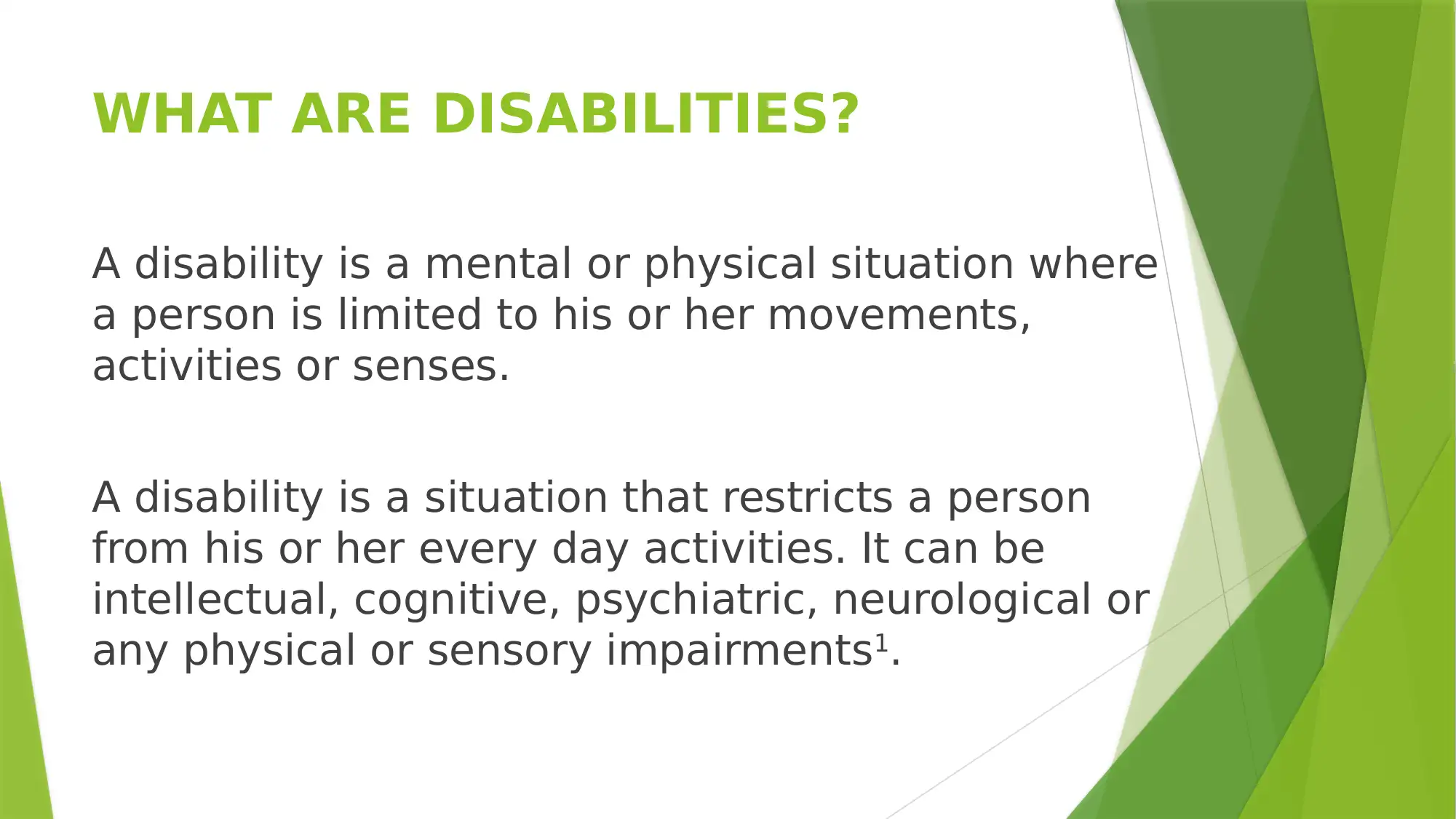
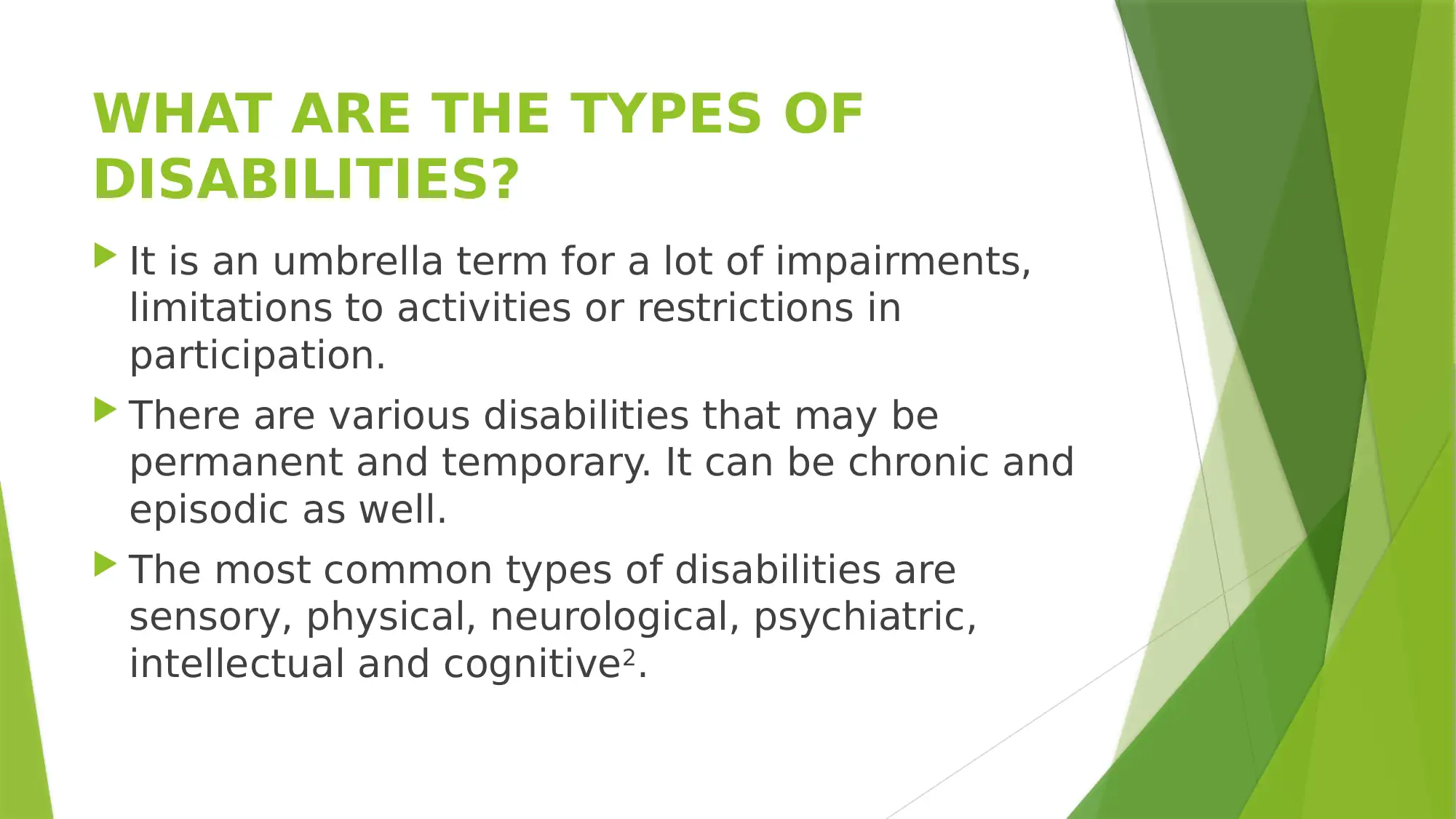

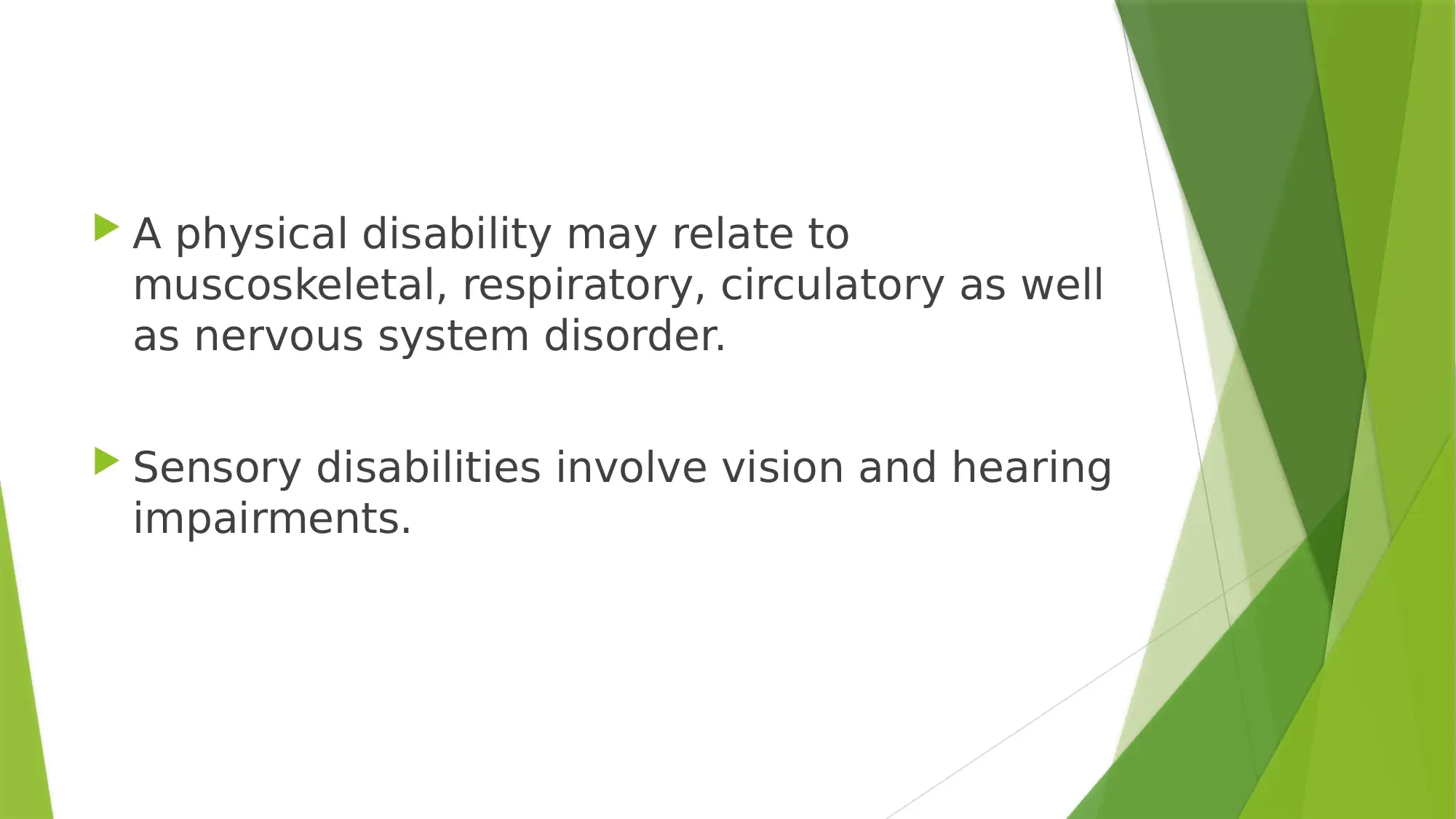
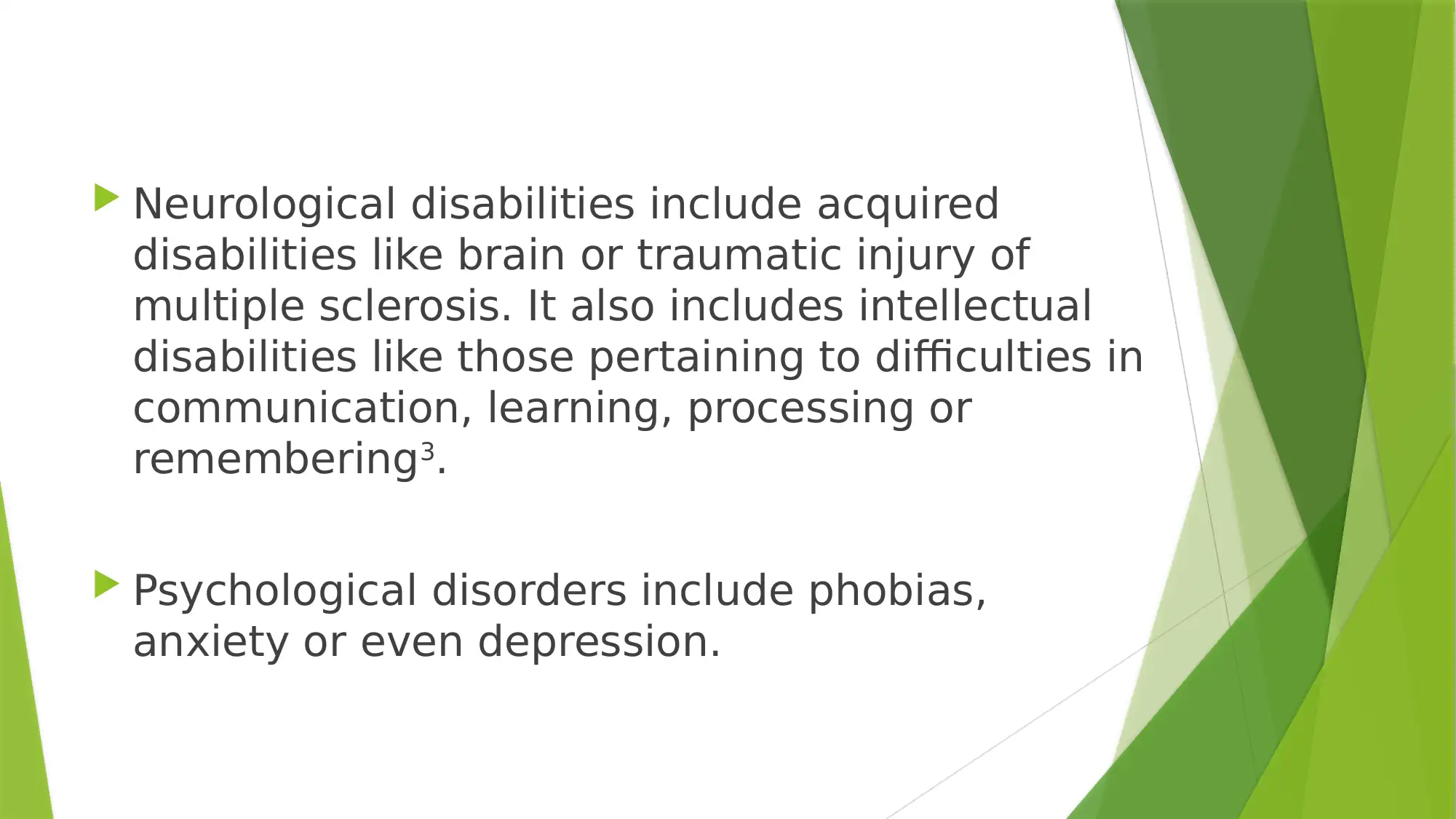
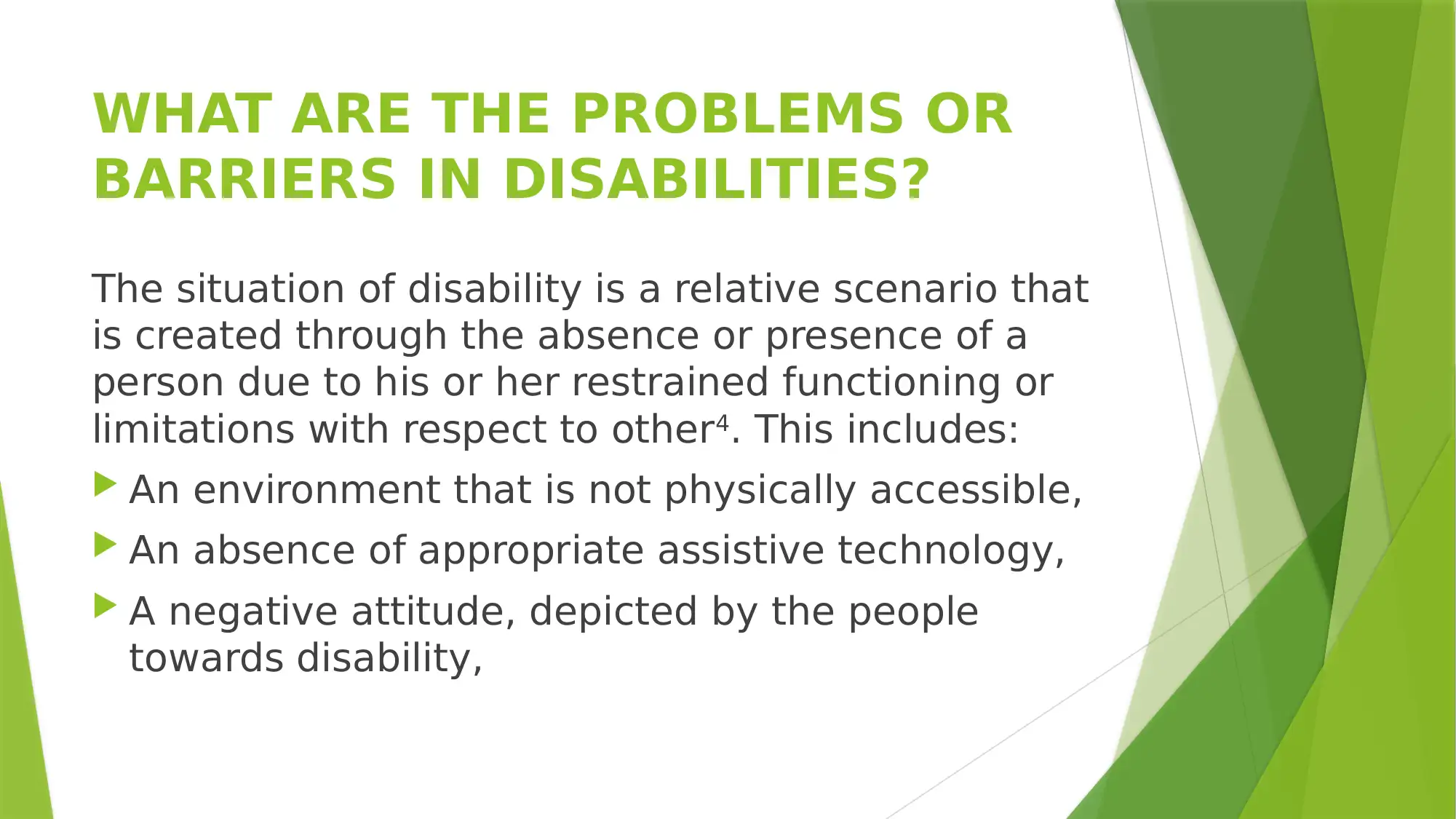
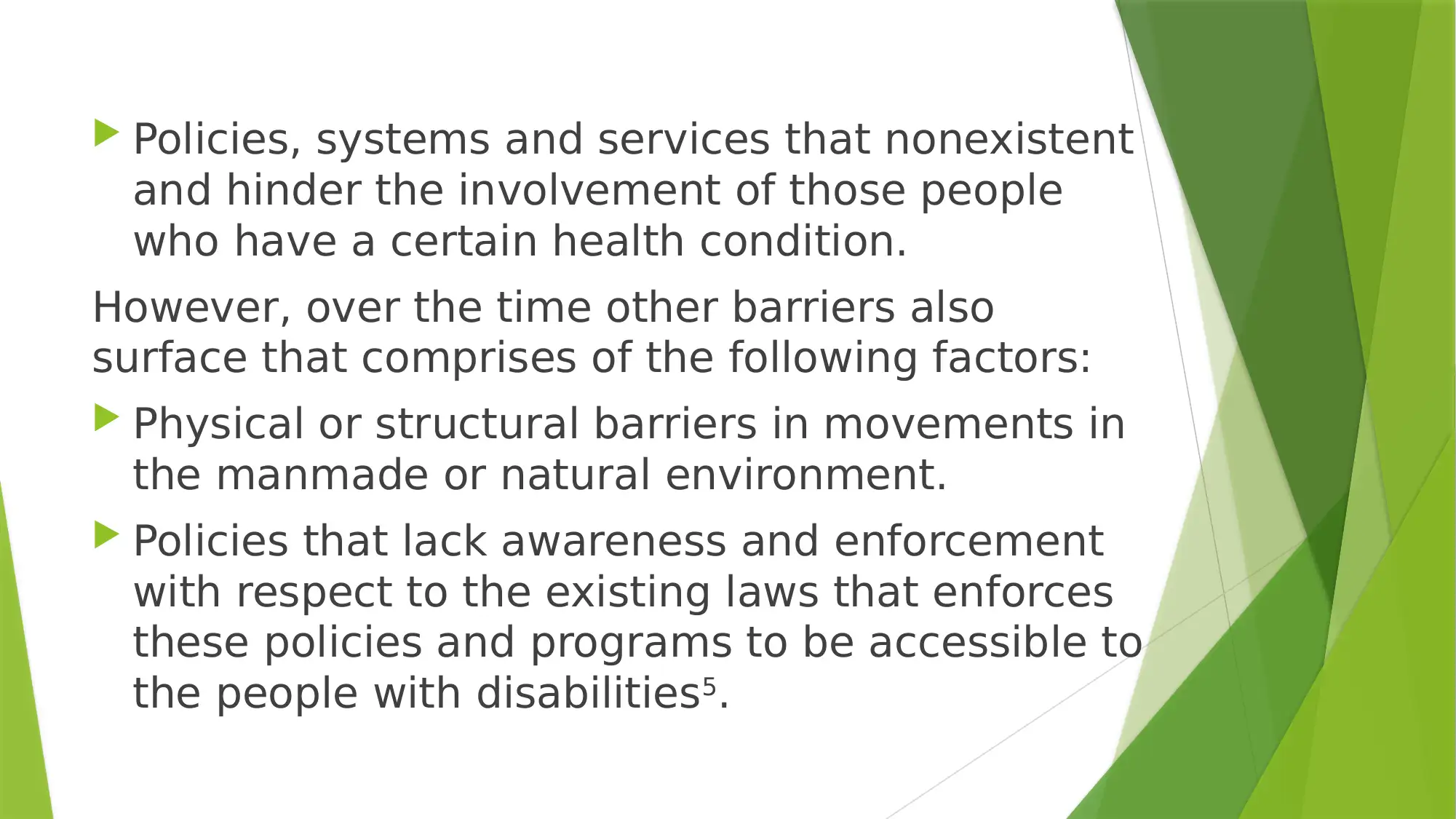
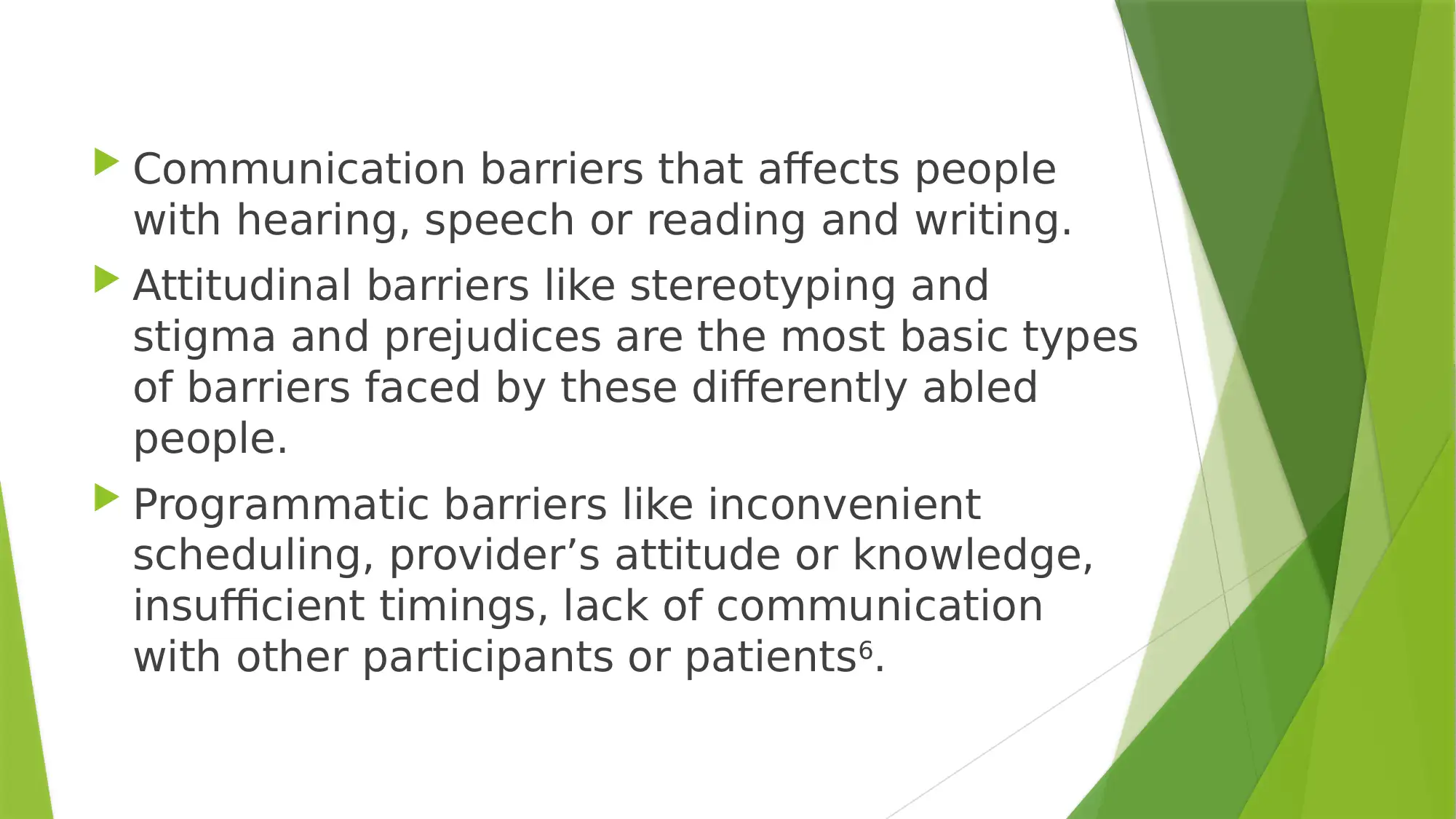
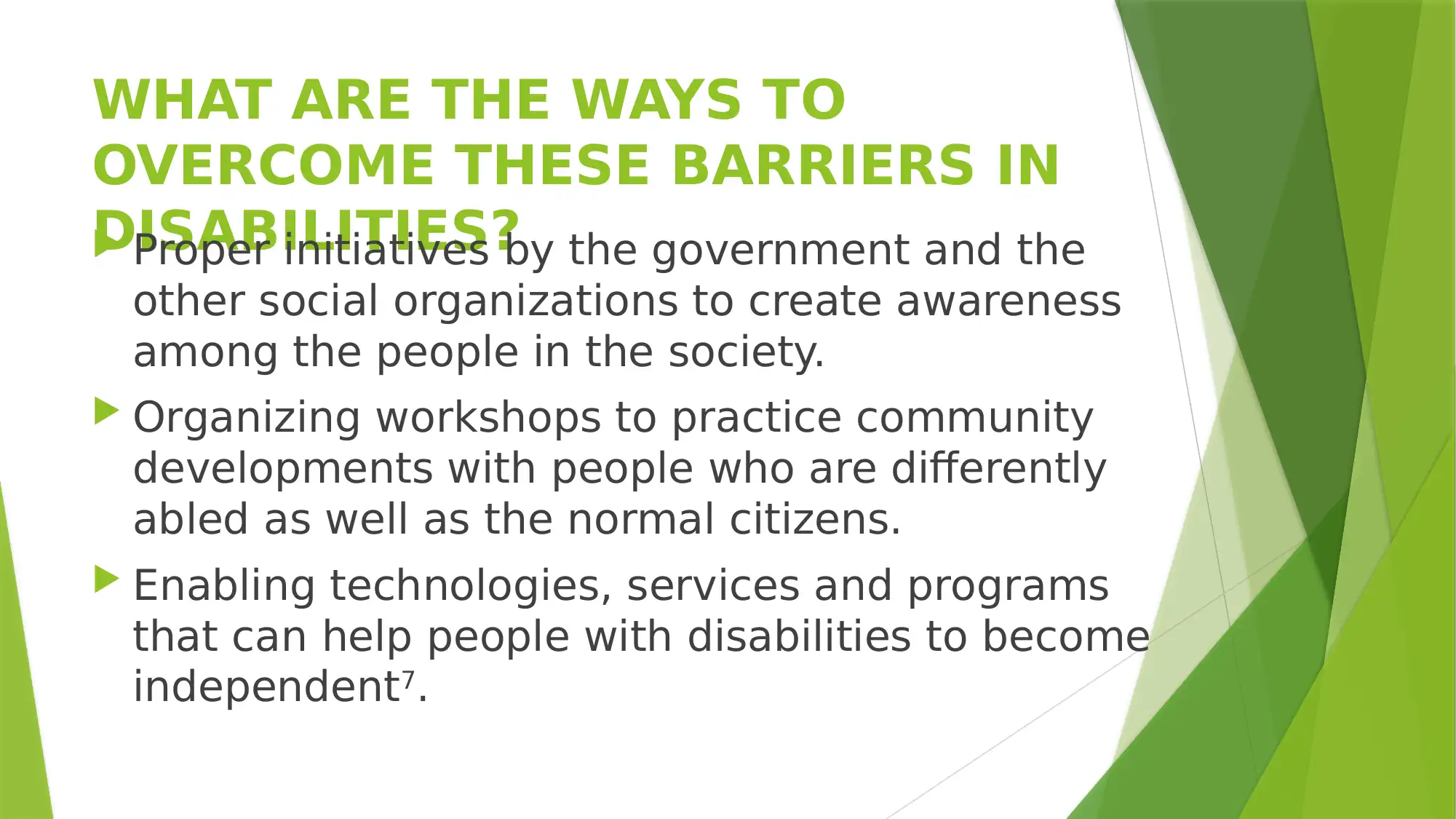

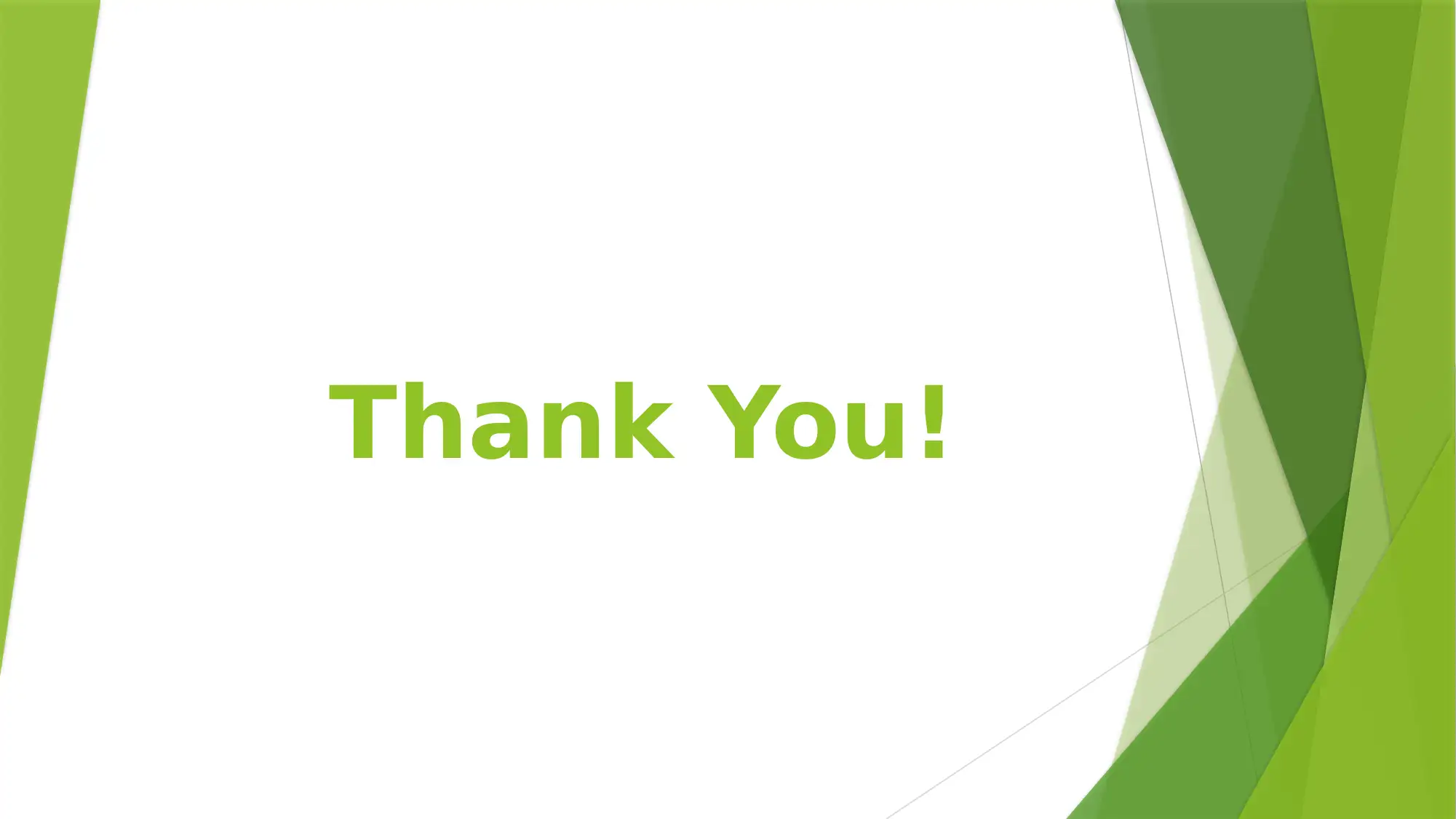





![Coursework: Mental Health and Wellbeing of Older People - [University]](/_next/image/?url=https%3A%2F%2Fdesklib.com%2Fmedia%2Fimages%2Fyr%2F3c92269340094292bd18c0d2d99c9706.jpg&w=256&q=75)
![[object Object]](/_next/static/media/star-bottom.7253800d.svg)